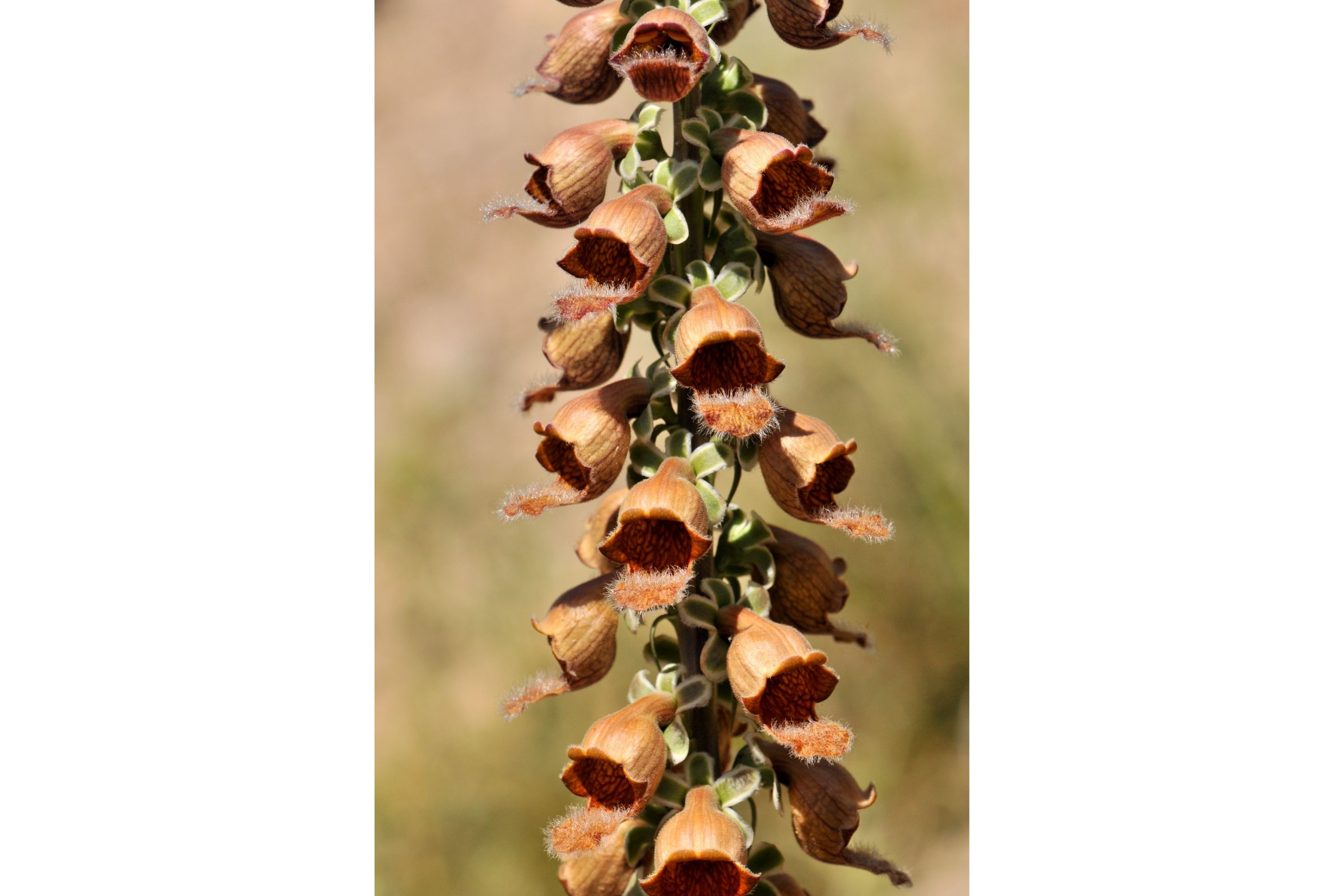Digitalis lamarckii
(Digitalis lamarckii)

Description
Digitalis lamarckii is a species of flowering plant in family Plantaginaceae that is native to Turkey. Digitalis lamarckii has basal leaves that are obovate to linear in shape and 5 to 20 cm (sometimes to 25 cm ) long and 3 to 13 mm wide. At the midpoint of the flowering stem, the leaves are 4 to 14 mm wide, linear or lanceolate shaped, and hairless. The flowers are arranged in to a raceme that is usually lax with the top of the inflorescence axis having pubescent hairs but hairless below. The corolla is 15 to 30 mm (sometimes to 35 mm) long. the lower lobe of the corolla is 7 to 14 mm long, linear to oblong-obovate in shape and narrowed below, it is whitish in color with light reddish-brown or yellowish-brown veins. The fruits are a capsule 10 to 20 mm long. Digitalis is a genus of about 20 species of herbaceous perennial plants, shrubs, and biennials, commonly called foxgloves. Digitalis is native to Europe, western Asia, and northwestern Africa. The flowers are tubular in shape, produced on a tall spike, and vary in colour with species, from purple to pink, white, and yellow. The scientific name means "finger". The genus was traditionally placed in the figwort family, Scrophulariaceae, but phylogenetic research led taxonomists to move it to the Veronicaceae in 2001. More recent phylogenetic work has placed it in the much enlarged family Plantaginaceae. The best-known species is the common foxglove, Digitalis purpurea. This biennial is often grown as an ornamental plant due to its vivid flowers which range in colour from various purple tints through pink and purely white. The flowers can also possess various marks and spottings. Other garden-worthy species include D. ferruginea, D. grandiflora, D. lutea, and D. parviflora. The term digitalis is also used for drug preparations that contain cardiac glycosides, particularly one called digoxin, extracted from various plants of this genus. Foxglove has medicinal uses but is also very toxic to humans and other animals, and consumption can even lead to death. The generic epithet Digitalis is from the Latin digitus (finger). Leonhart Fuchs first invented the name for this plant in his 1542 book De historia stirpium commentarii insignes, based upon the German vernacular name Fingerhut, which translates literally as 'finger hat', but actually means 'thimble'.
Taxonomic tree:







